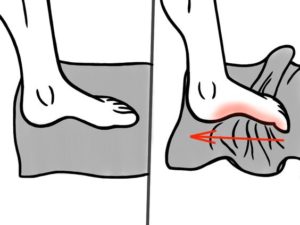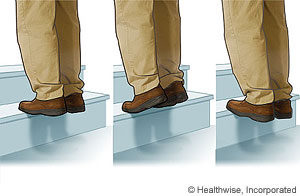What are flat feet?
Pes Planus, fallen arches, overpronation, and flat feet are all ways to describe a condition in which the arch of the foot collapses when the feet bear weight causing almost the entire sole of the foot to touch the ground. Normally, the tendons in the foot pull together the proper amount in order to maintain an arch when standing to allow for an even distribution of body weight, but for those with flat feet, the tendons do not pull together properly resulting in little to no arch and body weight being shifted to the inside of the foot. This condition affects around 80% of the population and in most cases does not result in any major pain or discomfort. However, because the feet are the foundation that supports the rest of the body, flat feet can cause problems throughout the body and may even lead to joints falling out of alignment because it causes the angle of your joints in your hips, knees, and ankles to change slightly, placing extra strain on those joints. Problems in these joints often result in pain in the foot and ankle region, the inside of the arch, the knees, the hips, and the lower back.
Flat feet – Normal Feet Comparison (Frontal View)
What causes flat feet and what are the symptoms?
The most common causes of flat feet in adults are as follows: the arches never developed during childhood, stretched or torn tendons, damage or inflammation of the posterior tibial tendon, broken bones, arthritis, and normal wear and tear of the foot from aging. Obesity, diabetes, and aging can increase the risk of developing flat feet as these place extra stress on the tendons in the feet. Again, flat feet are extremely common and many individuals do not notice any problems and require no treatment. However, others may experience a variety of problems including pain in the feet after long periods of standing/walking, a painful ache in the heels and arches, pain in the lower leg area especially the calf, knee, and hip, as well as low back pain.
An easy way to tell if you have fleet feet is the wet foot test. While this test is not a substitute for an actual diagnosis by a medical professional, it is a quick and easy self-assessment. To perform the assessment, simply wet the bottom of the feet and stand on concrete or a napkin or anything that will allow you to see an imprint of your foot. Step with the wet foot onto the desired medium and look at the imprint. Basically, the more of the sole of the foot that appears in the imprint, the flatter the foot. Also, note that each individual foot is unique and yours may not line up exactly with any of the three types pictured below. It is possible that you have slightly flat feet even if they don’t appear to conform to the flat foot depicted below, or the print from your left foot may look different than that of your right foot.
Wet Foot Test
Wet Foot Test – Normal Foot footprintWet Foot Test – Flat Foot footprintWet Foot Test – High-Arched Foot footprint
How are flat feet treated?
There is no way to restore the arch completely, so the main method of treating flat feet is to treat the symptoms. Many people experience great relief of their symptoms using one or more of the methods outlined in this section and do not require any further intervention.
1. Supportive Shoes Wearing comfortable shoes that support the heel and arch. Wearing the proper shoes is one of the easiest and most important ways of dealing with the problems associated with flat feet. The support provided by these shoes are especially important when performing activities that place excess strain on the feet particularly running. Tennis shoes, rather than running shoes, should be purchased as sports shoes because these shoes are designed for support of side-to-side motion as opposed to forward motion like in many running shoes. The president of the American Academy of Podiatric Sports Medicine recommends placing the toe of a prospective shoe on the ground with the heel facing upwards towards the ceiling and pressing firmly straight down on the heel. If the shoe bends in the center, he says it will not provide enough support. Additionally, for day-to-day shoes, hiking boots or shoes that support the ankle comfortably are good options because they help the ankle to not roll inwards as it is like to do in those individuals with flat feet.
2. Orthotics Rather than buying special shoes in order to support the heel and arch, another option is to acquire orthotics that can be placed in any of the shoes that you already own. Orthotics help to distribute and minimize pressure in the foot by providing support to the arches. Orthotics can be custom designed and there is also the option of over-the-counter orthotics. When choosing which orthotic is right for you, it is generally best to consult a medical professional, but there are a few things to keep in mind when shopping for inserts: always consult the sizing chart, make sure the support is made from a firm material, and consider features like machine-washable and anti-microbial coatings.
3. Exercises Whether you decide to invest in new shoes, orthotics, or both, it is always a good idea to also engage in foot strengthening exercises. The towel scrunch and stair raise exercises are great ways to strengthen the muscles of the bottom of the feet and eventually decrease pain in the arch. For the towel scrunch, place a washcloth in front of your feet while sitting in a chair. Grab the edge of the towel using only your toes and scrunch it towards you, placing the bunched up towel under your foot. Gradually grab more of the towel until you reach the end. Do so with both feet. For the stair raise, stand on the edge of a stair or raised board with only the balls of your feet on the stair letting the rest of the foot hang off the edge, raise onto your tiptoes and slowly lower yourself without letting the heel drop below the stair line so as to engage the arches rather than the calves. Diagrams of these exercises are depicted below.
Towel Scrunch

Stair Raise

The doctors at West Family Chiropractic are well-versed in the assessment and treatment of flat feet. If you suspect that you have flat feet, know that you have flat feet and feel unaligned as a result, are experiencing pain in the feet, ankles, knees, hips, or low back and think that it may be associated with flat feet, would like further instruction on managing your flat feet particularly with regard to shoes, orthotics, and exercises, are interested in available orthotics, or have any other questions/concerns relating to flat feet or other health conditions, please do not hesitate to call the office and set up an appointment at West Family Chiropractic. We look forward to hearing from you!


About The Author: WFCAdmin
More posts by WFCAdmin